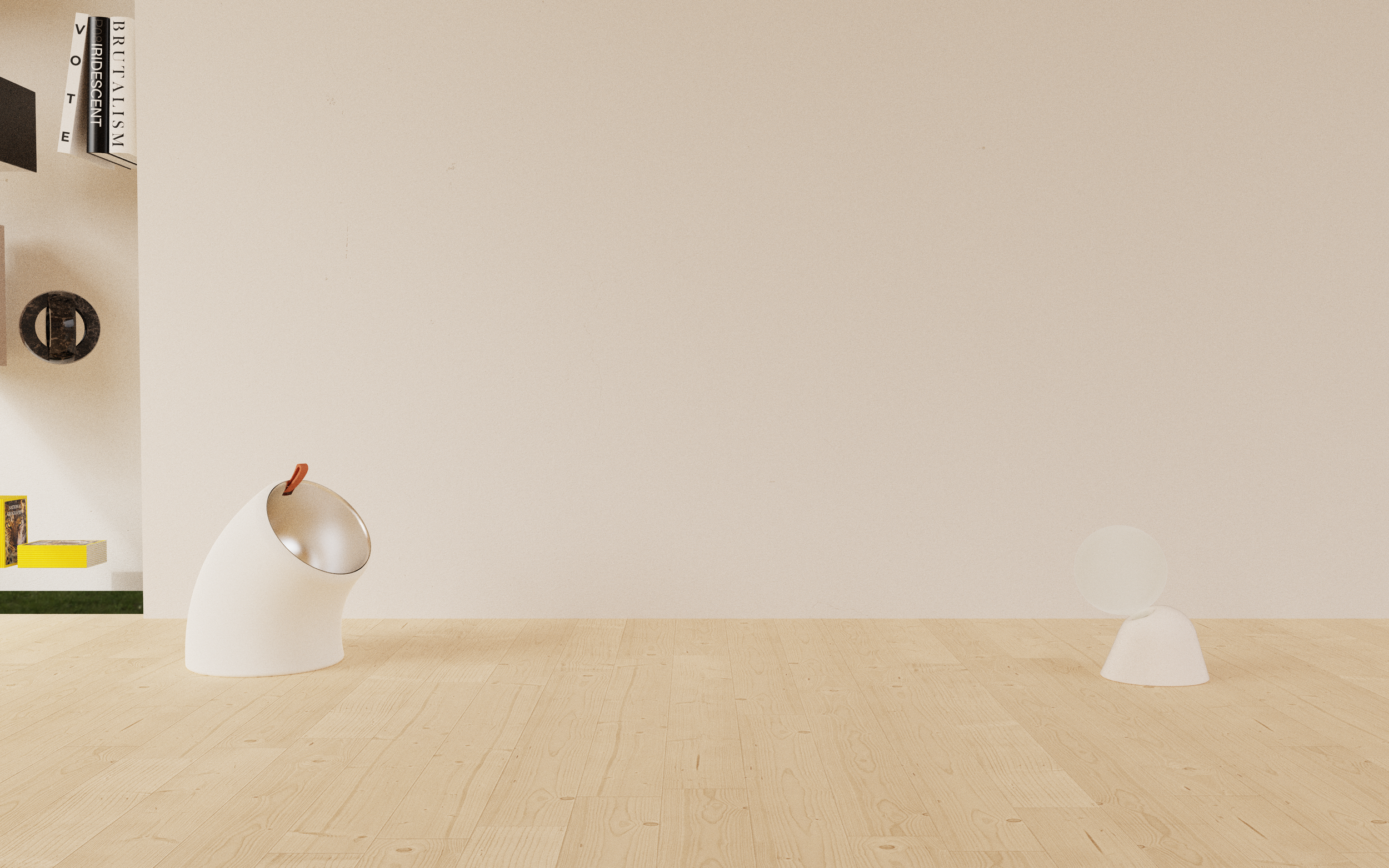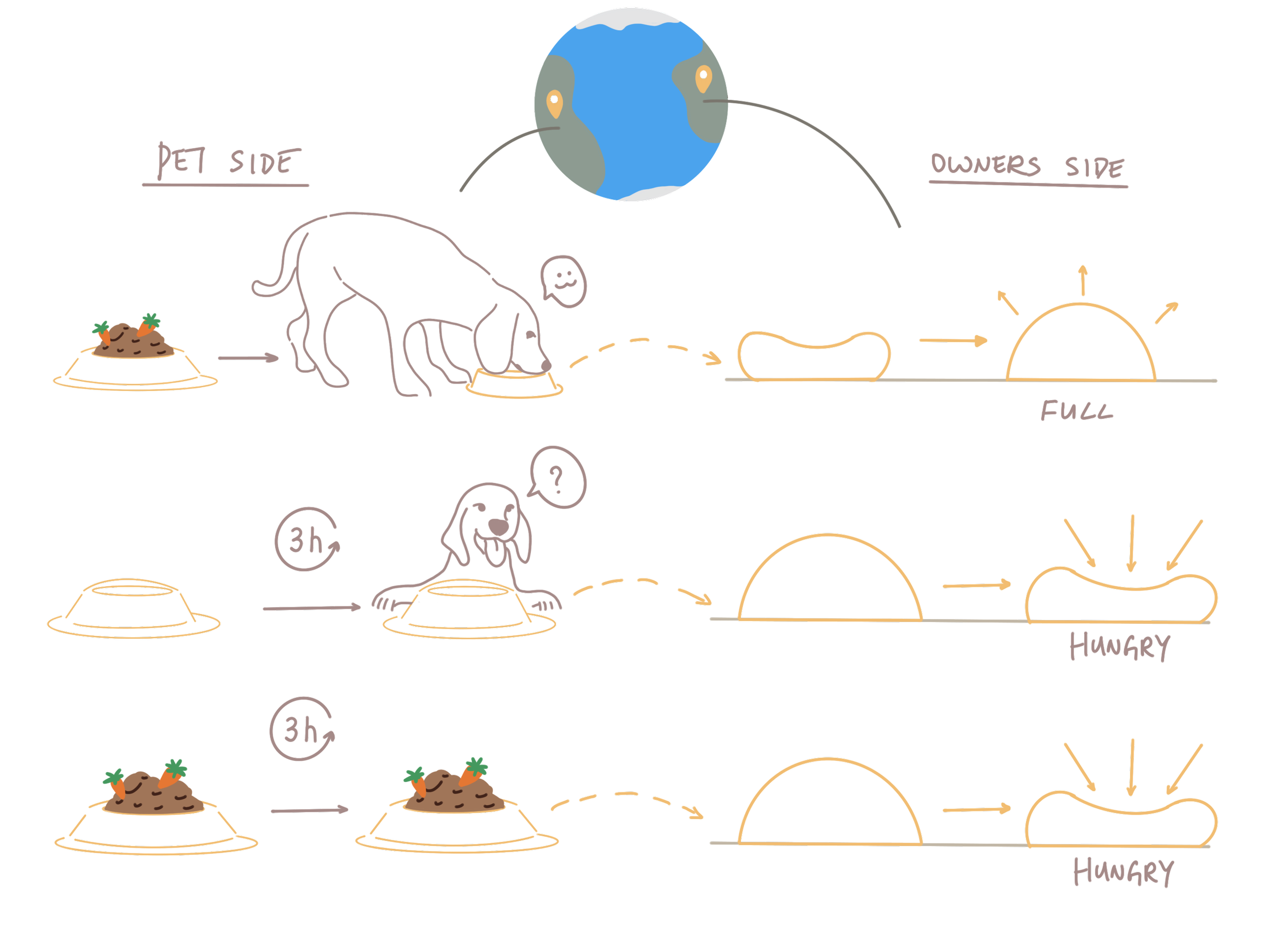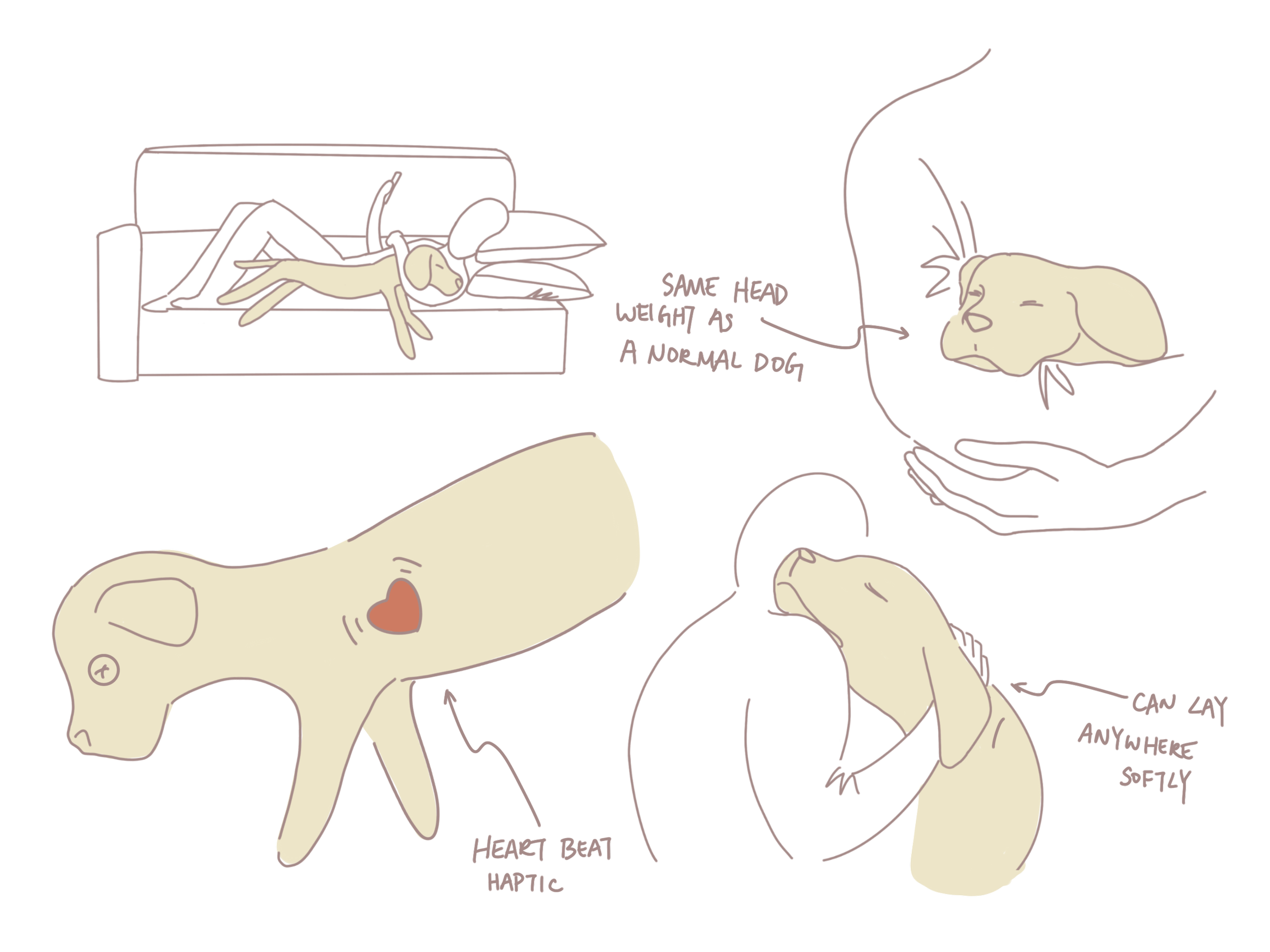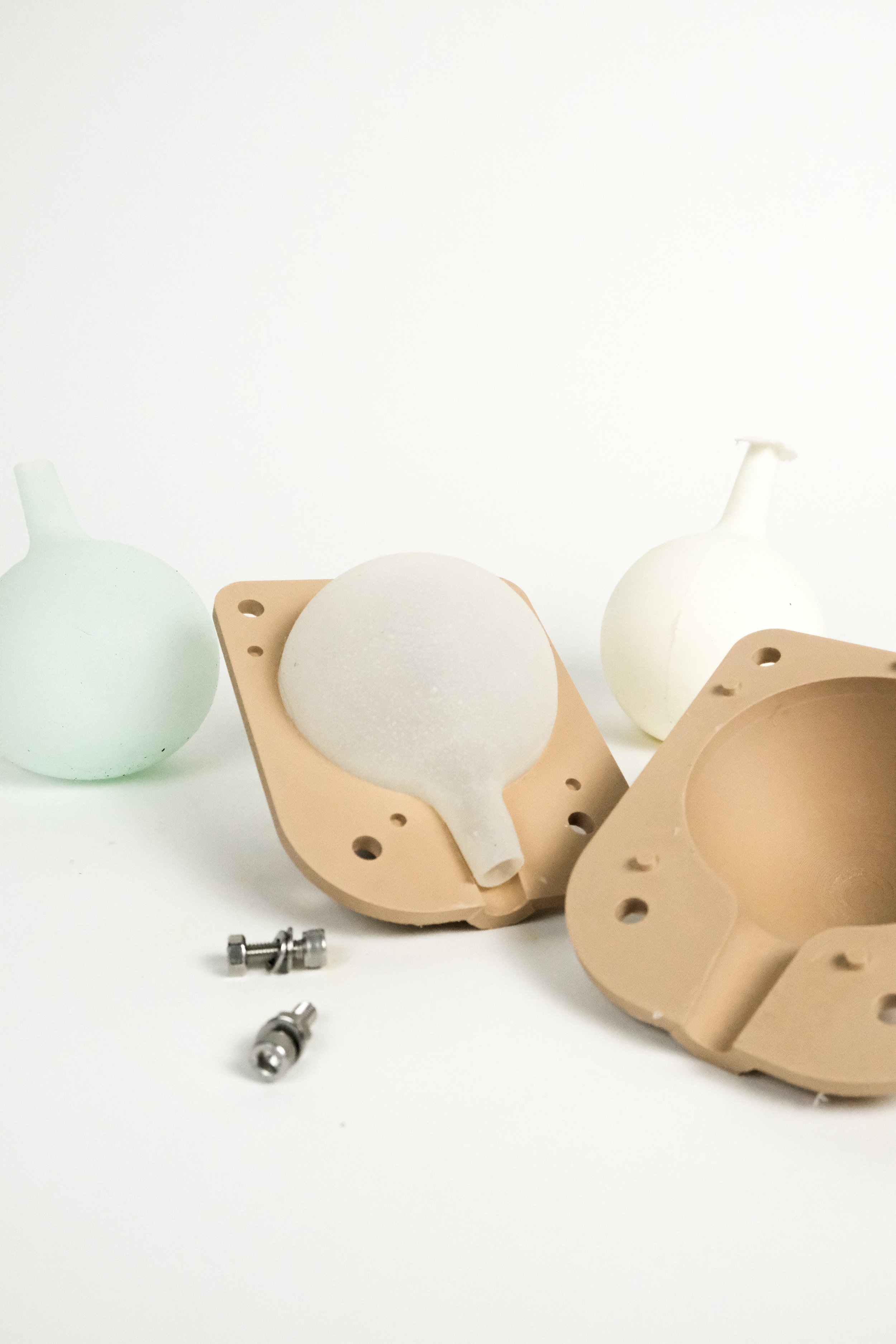
Connect You With Your Pet On The Other Side Of The Planet

Project Overview
Dough Dough is a set of devices, a dog bowl and a silicone balloon which mimic the dog’s belly. According to the weight of the food in the dog’s bowl, the remotely connected balloon indicates whether the dog has finished their meal or not.
The product aims to eliminate physical separation by providing a haptic presence, reducing owner anxiety and encouraging their social interaction.
Field: Sensory Design, Product Design, Interaction Design
Year: 2024
Duration: 4 Months
Type: Personal Project, Capstone Project
Software Used:

How It Works
When the dog finishes their meal, which means the weight of the food in the bowl decreases….
When food is added to the bowl, which means the weight of the food in the bowl increases…
Final Prototype
The balloon device will then inflate to show that they are full.
The balloon pumps out air, signaling mealtime.
Over time, the air in the balloon will be released gradually, which will also let the owner sense that the pet is digesting the food in the stomach.

Inner Structure
Arduino Uno R3 microcontrollers in the dog bowl and silicone balloon device manage the process from food intake to digestion simulation. The balloon device activates two air pumps in response. These pumps, regulated by a valve, either inflate or deflate the balloon. Inflation signifies the dog’s fullness immediately after a meal, while gradual deflation represents the digestion process over time, visually indicating the pet’s need for food.
The dog bowl features a scale that accurately measures food weight, providing real-time consumption data. As the dog eats, the weight sensor relays changes to the bowl's Arduino, which then wirelessly signals the balloon device via an HC-05 module to respond accordingly.

Research Takeaways
65.1 million American families own a dog, and 47% of them experience separation anxiety from their dogs
31% of the respondents use pet cameras to keep an eye on their pets’ activities.
41% of pet owners arrange for a friends or family member to check on them.

Design Objective
Pet owners experience separation anxiety that disrupts their daily activities when apart from their pets for a long period of time. The product aims to eliminates physical separation by providing a haptic presence, reducing owner’s anxiety.

Ideation
The first stage of design is to ideate with solutions to address the problem. From the perspective of a former pet owner, the desired outcome is an experience that allows one to feel their pet's presence at any time.
Tummy Tell features two devices: a dog bowl and a silicone balloon that simulates a dog's belly. The balloon, linked to the bowl, reacts to food weight to show if the dog has finished eating.
Pawsitive Vibes is a dog-shaped cushion that mimics a dog's weight to soothe anxiety for those missing their pet. It also features a heartbeat simulator for added comfort.
Fetch Alert is a set of devices: a dog pulling toy and a dog-shaped phone accessory. When the dog pulls the toy, it sends a notification to the owner's accessory. The user can then knock on the accessory to remotely give a treat.

User Testing
During the user testing phase for Dough Dough, feedback from a diverse group of pet owners provided critical insights into both the dog bowl and the owner's device.
For the owner’s device:
Abstract shape than literal shape;
Prefer a smaller size to put on the table or a travel size to take with;
A desire for a compact, soft, and portable design that could easily integrate into home environments and travel scenarios
For dog’s bowl:
Prefer the shape of the aesthetic bowl;
Stability of the bowl is crucial for excited dogs;
A more stable and wider dog bowl to ensure a secure eating experience for their pets,

Form Exploration
One of the main challenges for the form exploration is the design language shared between two devices, the food bowl and the balloon. By applying a minimalist design language, the design for pet owner’s device is reduced to two elements, one balloon and one main body. The final form echoes the curve of the pet bowl shell, as well as a posture that mimics a sitting dog.

Choice of Material
The most challenging part is the process of casting the silicone balloon for the Owner’s device. Starting by CAD modeling, a two-part balloon mold was designed and 3d printed for casting. Screws and nuts are crucial for fasten the two-part mold together. By injecting a certain amount of silicone inside the mold, rotational molding technique was applied subsequently. After countless experiments, a perfectly even balloon was then produced.

Prototype Iterations


Background
I had a dog, Dou-dou, since I was five. For 17 years, she was my only companion through life’s ups and downs. After high school, I moved to New York and left her in Beijing, making the separation harder than expected.
I often wondered if she missed me or was hungry, and daily thoughts of her consumed me. Despite family photos and cameras installed on every corner of the house to monitor my dog, I was still unable to emotionally sync with my dog with absences of physical interactions.









































